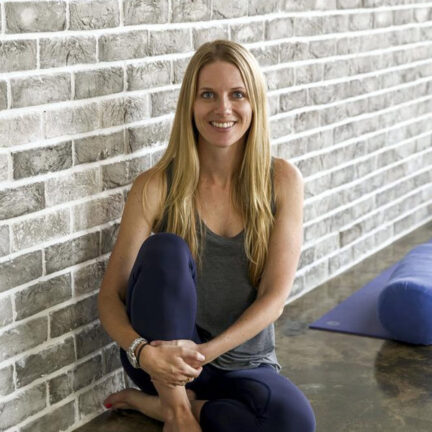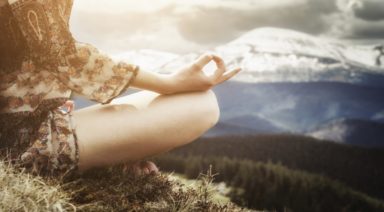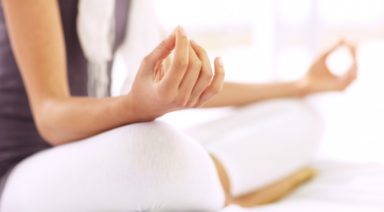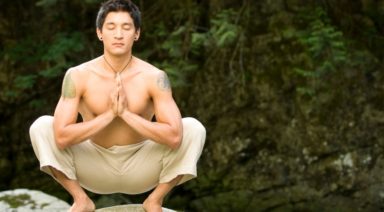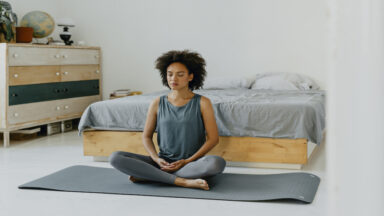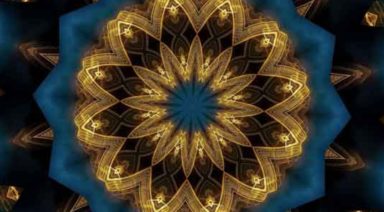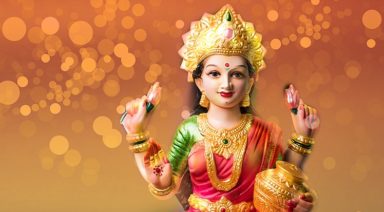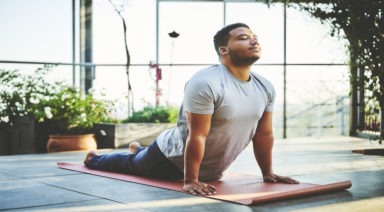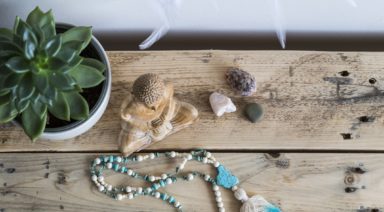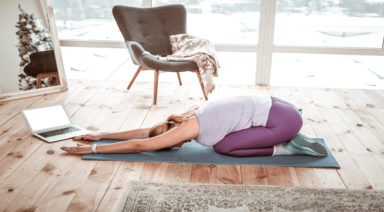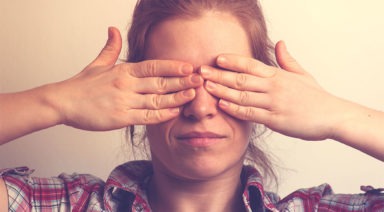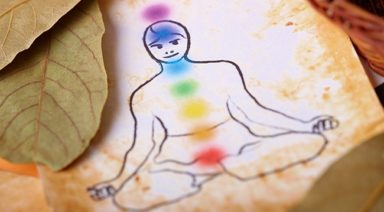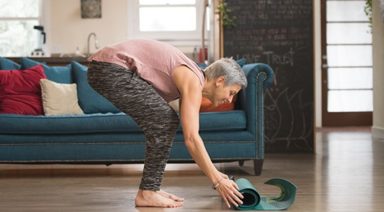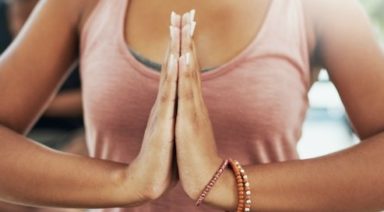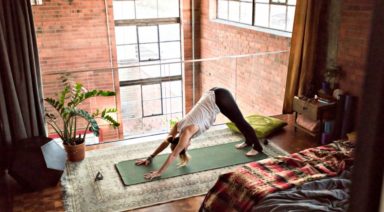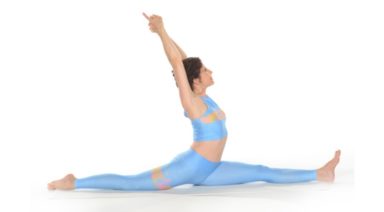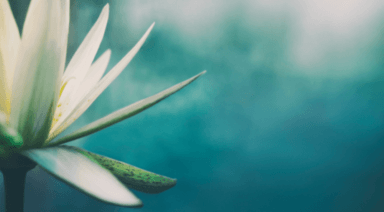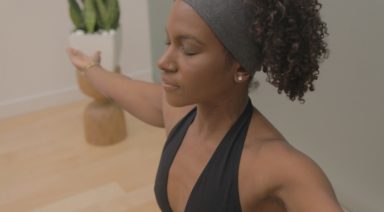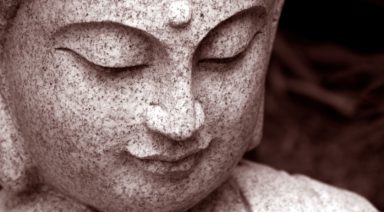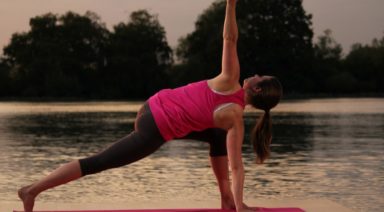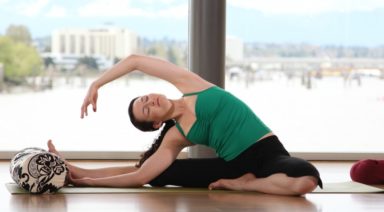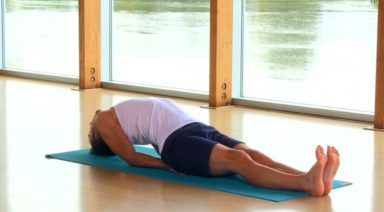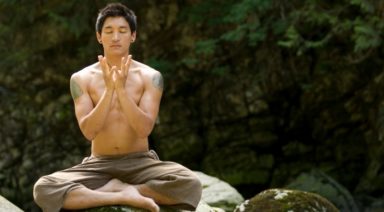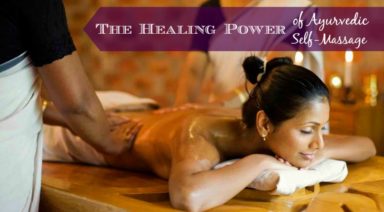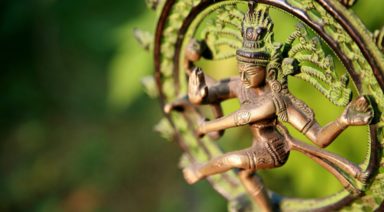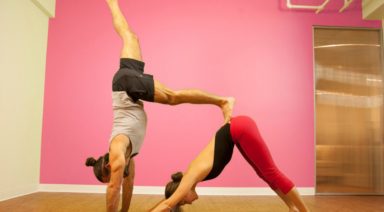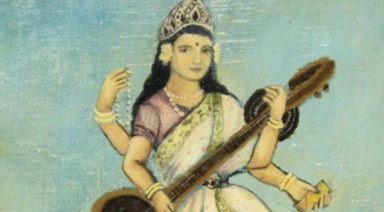3 Ways To Set An Intention In Your Yoga Practice

Yoga is about living a more mindful and intentional life.
I started doing yoga in 2004, and the idea of living a more mindful and intentional life was partly the reason I got into it. I was certainly attracted by the physical side; from the outside, it looked a bit like gymnastics, and ever since kindergarten I had always wanted to be gymnastic star.
However, the body-mind connection I had heard so much about is what really brought me to that first class in the yoga studio. De-stress? Quiet the mind? Develop better awareness? I didn’t know how we were going to do any of that, but it sounded good to me.
The first thing the teacher said in the first class was, “We’ll start by taking a moment to set an intention for your practice.” I drew a total blank. I had no idea what setting an intention meant. I intend to get better at yoga. I intend not to look like a fool in this class. I intend to pick up a latte on my way home. Clearly I didn’t quite get it.
Over the following years, as I learned and grew in my yoga practice, I continually struggled with the basic concept of setting an intention. I would often throw something out there like, “I’m here to dedicate this hour to myself; “I’m here to escape my stressful life”; “My intention is to sweat”; usually not with a lot of thought behind it and always with a self-centered approach.
It wasn’t until I attended my yoga teacher training with the inspiring Paul Dallaghan that I finally really got some value out of setting an intention for my practice. He didn’t actually word it as setting an intention; and perhaps that’s why it seemed less confusing for me. But every morning, before practice, we spent a few moments reflecting on three powerful categories, which I share with you below.
It’s important to note that we didn’t spend 10 minutes thinking about this stuff everyday (who has that kind of time in the real world anyways?); but two to three breaths per category, which is enough, especially if you’re doing it every time.
-
Gratitude: Even in stressful or impossibly tough times, we are lucky to have something in our lives. These are the things that make life a little easier, a little more enjoyable and that make you a happier person. Take a few breaths to focus on the things, the people and the situations in your life that you are grateful for.
-
Forgiveness: Let’s face it: none of us are perfect. We’ve wronged people, and people have wronged us. Its not always intentional and unfortunately, it’s just the way the world works. Take a few breaths to reflect on the things you’d like to be forgiven for, and sending a few forgiving thoughts towards people who have wronged you. In short, this just means letting go. Holding onto bad feelings just doesn’t do us any good.
-
Guidance: In life, we can’t do it all alone. Sometimes we just need help. Reflecting on this helps us to realize that we need help (which is half the battle sometimes!) and makes us much more likely to look in the right places for help. Take a few breaths to think about what you need help with.
Reflecting on these three categories has become integral to my practice, and often forms the beginning or end of the sequence when I’m teaching. It links my yoga practice to the other important things in my life. It also reminds me to put things in perspective and gives a much deeper meaning to those few moments at the beginning or end of my yoga practice when I let go of the stress of my day and focus on what I came to do: my practice.
How to Use Mudras to Regulate the Five Elements of Your Body
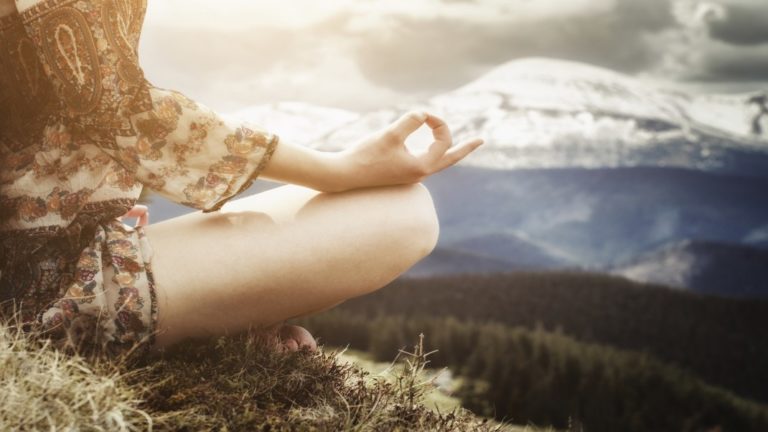
Many cultures from around the world, including those based in China, Japan, India, and elsewhere, believe the Universe is comprised of specific elements. You are likely familiar with the four most common elements of earth, air, fire, and water. Some traditions, including Indian philosophy, Hinduism and Buddhism, add ether or space as the fifth element. According to these groups, humans are tasked with keeping these elements in alignment in the Universe, on earth, and within ourselves.
- Earth, or bhumi in Sanskrit, corresponds to anything solid. For instance, in your body earth elements include skin, bone,hair, teeth and organs.
- Air, or pavan in Sanskrit, is believed to be the highest of all the elements. Within the body, your breath is the air element.
- Fire, or agni in Sanskrit, serves as a source of warmth. The heat from our breath and other parts of our body correspond to this element.
- Water, or jala in Sanskrit, is critical to the survival of all living things and as such is one of the most important elements to keep in balance. All of the liquids in our bodies stem from this element.
- The great unifier of the elements is Ether, known as aakash in Sanskrit. Ether is thought to bring the other four elements together and allow them to prosper.
It is thought by some that the imbalance of these elements on Earth can cause natural disasters from drought to earthquakes to wildfires. Similarly, the belief is that if these elements are misaligned within a human body, this can lead to disease and other ailments. For the treatment of imbalance within oneself, performing specific mudras are often recommended.
Before you begin to diagnose which elements might be weak or imbalanced, try to identify which element is your greatest strength. For example, I am a Leo, which means my element is fire. Knowing this can direct me towards my area of strength and power. What is your element?
What are Mudras?
From the Sanskrit word mudra, mudras are symbolic hand gestures used in Hindu or Buddhist religious ceremonies and in the practice of yoga. Occasionally these gestures are done with the whole body, but more often they are focused on the hand. While I will be focusing on the mudras from the Buddhist and Hindu religions, you can find mudras in almost every culture. They can be found in meditation, yoga, the hand gestures in ethnic dancing – think Indian or Flamenco.
My preference is to practice madras while sitting in a cross-legged position on the floor with plenty of back support. However, they can be practiced while sitting, lying, standing, walking or even talking. Moreover, you only need five minutes to practice your mudras, but for best results upwards of twenty minutes is suggested. Which means you have no excuse not to give one a try!
For me, the practice of mudras is meditation with specific hand movements. For those of you that struggle with meditation, this practice is a good gateway into more formal meditation. You sit relatively still and allow our mind to slow, but you can keep your mind somewhat active as your focus on the hand gestures. This is especially good for mudras that have your alternate between different positions.
If you already have a regular meditation practice, you may already be using a mudra and not realize it. For instance, if you meditate by sitting in a cross legged position with your thumb and index finger connected so they form a zero and your other fingers extended and your hands placed palms-up on your thighs, then you are performing a classic Chin Mudra. This mudra focuses on your breathing. By sitting and holding your hands in this way you are activating your diaphragm and creating a healthy flow of oxygen in and out of your body.
The Basics of Mudras and the Five Elements
- Mudras for the earth element will include your ring finger
- Mudras for the air element will incorporate your index finger
- Mudras for the fire element will include your thumb
- Mudras for the water element will incorporate your pinky or little finger
- Mudras for the ether element will focus on your middle finger
Mudra for Balancing Energy
A good place to start when diving into mudras for element alignment is this mudra for balancing energy. It incorporates each of the five elements by including each finger in the process.
If you are feeling “off” and are looking for a quick fix that you can do from anywhere, this is it. You can even take five minutes at your desk to perform this mudras during the day or take a few minutes before going to bed at night.
It is a set of four mudras or hand gestures. First, on both hands simultaneously, touch the tips of your thumb and index finger together and hold for approximately five seconds. Then, move your thumb to your middle finger and hold that connection. Continue to your ring finger and lastly your pinky. Do several rounds of this until your breathing has slowed and you are ready to return to your day or drift off to sleep.
Mudra for Arthritis or Parkinson’s
Simply called Vayu, this mudra is recommended for those suffering from arthritis or Parkinson’s Disease. This is not a cure, but might help in addition to your other treatments and medications. Press the index finger on the base of thumb and keep the thumb on the index finger. Let the other fingers be straight. Do this for several minutes.
Mudra for Increased Strength
Named the Prithvi Mudra, this simple gesture aims at increasing your physical strength. Join the tip of the thumb and ring finger and hold for several minutes. Your other fingers should be pointing outwards.
Mudras for Balancing Emotions
These mudras are aimed at helping adjust an emotion that is overwhelming you in some way. Notice that each finger corresponds not only to an element, as discussed above, but also to emotions and internal aspects of your body. In order to affect either the emotion or body part, squeeze the corresponding finger on both sides.
- For emotions relating to fear or issues related to the kidneys, activate your little or pinky finger
- For emotions relating to anger or issues connected to the liver, gall bladder, or central nervous system, activate your ring finger
- For dealing with the emotion of impatience or the heart, small intestine, circulatory and respiratory systems, activate your middle finger
- For emotions relating to depression, sadness, and grief or issues with the lungs, activate your index finger
- For dealing with the emotion of worry or anxiety or for reoccurring stomach issues, activate your thumb
For me this guidance triggers a few thoughts. First, the close connection between anxiety and the stomach make complete sense to me. Whenever I am feeling super anxious, my stomach very quickly becomes my enemy. I also find it amusing – albeit in a sophomoric way – that the middle finger corresponds to impatience. Lastly, I think about individuals who imbibe in too much alcohol and how when the liver is in overdrive, so then is their ability to regulate the emotion of anger. Do you see any other connections that you can make either in your life of in the lives of your friends and family?
The Connection Between Mudras and Yoga
A lesser known type of yoga is called Yoga Tatva Mudra Vigyan. It incorporates select mudras into a more sedentary yoga practice, similar to meditation. The yoga texts that describe this branch of practice are the Hatha Yoga Pradipika and Gheranda Samhita.
One example of a mudra that lends itself to yoga is the Brahma Mudra. This mudra is known for relaxing the nervous system, reducing snoring, and increasing lung capacity.
In the exercise, you first must put your hands into the Adi Mudra. In Adi Mudra, the thumb is placed at the base of the small finger and the remaining fingers curl over the thumb, forming a light fist. Now, that you are in Adi Mudra, turn the knuckles of both hands together the hands facing upward are placed at the navel area. It is important when practicing any yoga mudra to take at least twelve deep breaths. The longer you hold this pose and observe your breath, the greater the outcome.
Recommendations
If you haven’t already tried out some of these mudras while reading this article, here are some next steps. First, decide if you would like to work with mudras in your yoga practice, meditation, or if there is a specific mudra that meets your needs.
For a more formal approach to incorporating mudras, here is a quick video that demonstrates a few easy mudras, I think Faith does a great job of walking you through the basics. Once you have progressed through her lesson, the next step is to try this longer video. Think of it as a whole class. You will feel so good afterwards and have a much better understanding of mudras and how they can be applied.
Also, now that you are getting more in touch with your hands, there are specific exercises you can do to take care of them.
While I suggest starting with the videos to learn the poses, after that you are free to explore on your own. I really like mudras, because unlike meditation and yoga, which are best practiced in a quite space, mudras can be practiced at any time. They can be added into your day in a more organic way. You can pick a mudra for stressful meetings and another one for before drifting off to sleep.

